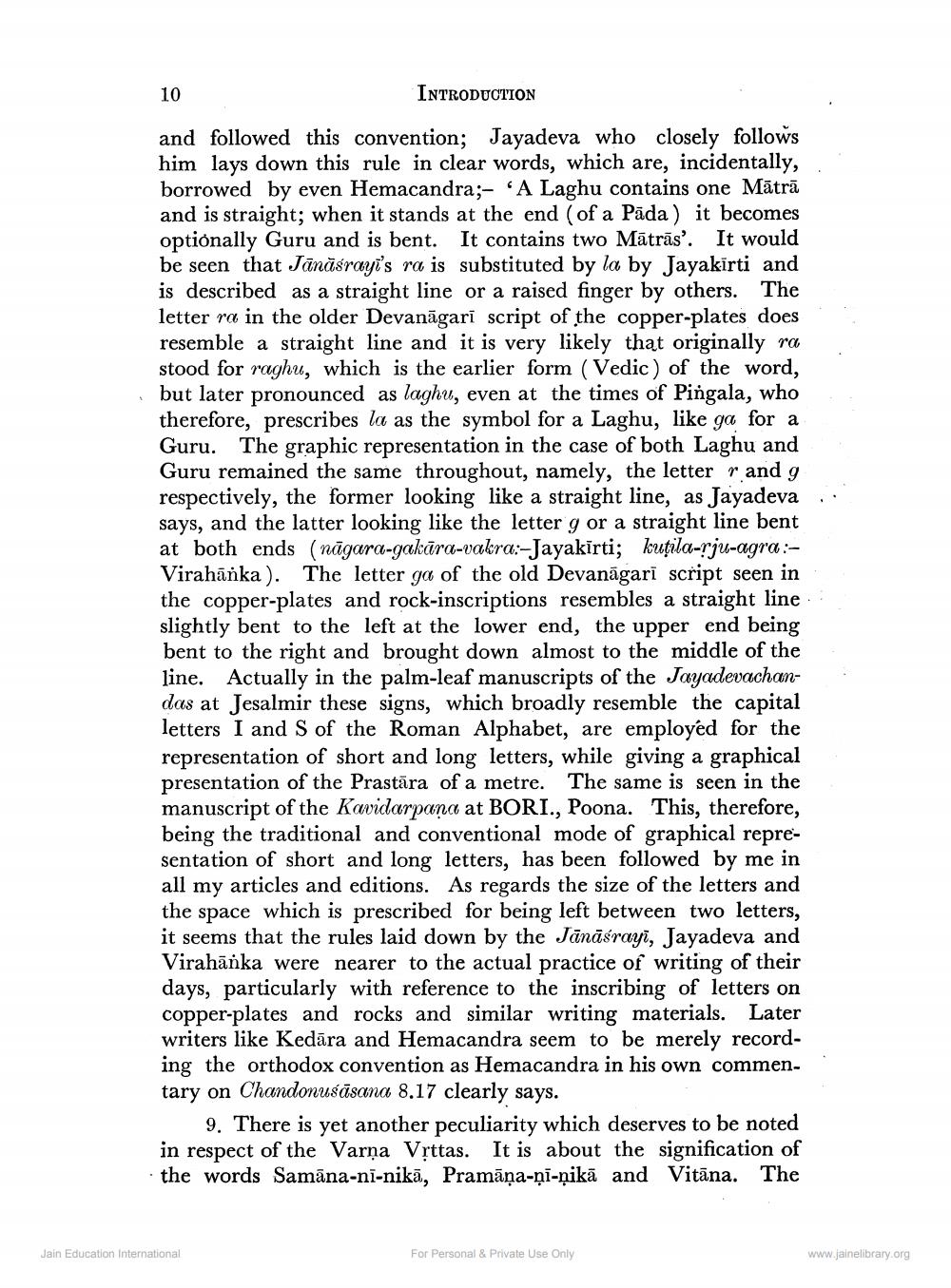________________
10
INTRODUCTION
and followed this convention; Jayadeva who closely follows him lays down this rule in clear words, which are, incidentally, borrowed by even Hemacandra;- A Laghu contains one Mātrā and is straight; when it stands at the end (of a Pāda) it becomes optionally Guru and is bent. It contains two Mātrās'. It would be seen that Janasrayi's ra is substituted by la by Jayakirti and is described as a straight line or a raised finger by others. The letter ra in the older Devanagari script of the copper-plates does resemble a straight line and it is very likely that originally ra stood for raghu, which is the earlier form (Vedic) of the word, but later pronounced as laghu, even at the times of Pingala, who therefore, prescribes la as the symbol for a Laghu, like ga for a Guru. The graphic representation in the case of both Laghu and Guru remained the same throughout, namely, the letter rand g respectively, the former looking like a straight line, as Jayadeva says, and the latter looking like the letter g or a straight line bent at both ends (nāgara-gakāra-vakra:-Jayakirti; kutila-rju-agra:Virahanka). The letter ga of the old Devanagarī script seen in the copper-plates and rock-inscriptions resembles a straight line slightly bent to the left at the lower end, the upper end being bent to the right and brought down almost to the middle of the line. Actually in the palm-leaf manuscripts of the Jayadevachandas at Jesalmir these signs, which broadly resemble the capital letters I and S of the Roman Alphabet, are employed for the representation of short and long letters, while giving a graphical presentation of the Prastara of a metre. The same is seen in the manuscript of the Kavidarpana at BORI., Poona. This, therefore, being the traditional and conventional mode of graphical representation of short and long letters, has been followed by me in all my articles and editions. As regards the size of the letters and the space which is prescribed for being left between two letters, it seems that the rules laid down by the Janāśrayi, Jayadeva and Virahanka were nearer to the actual practice of writing of their days, particularly with reference to the inscribing of letters on copper-plates and rocks and similar writing materials. Later writers like Kedara and Hemacandra seem to be merely recording the orthodox convention as Hemacandra in his own commentary on Chandonusāsana 8.17 clearly says.
9. There is yet another peculiarity which deserves to be noted in respect of the Varna Vṛttas. It is about the signification of the words Samāna-nī-nikā, Pramāṇa-ṇī-ņikā and Vitana. The
Jain Education International
For Personal & Private Use Only
www.jainelibrary.org




